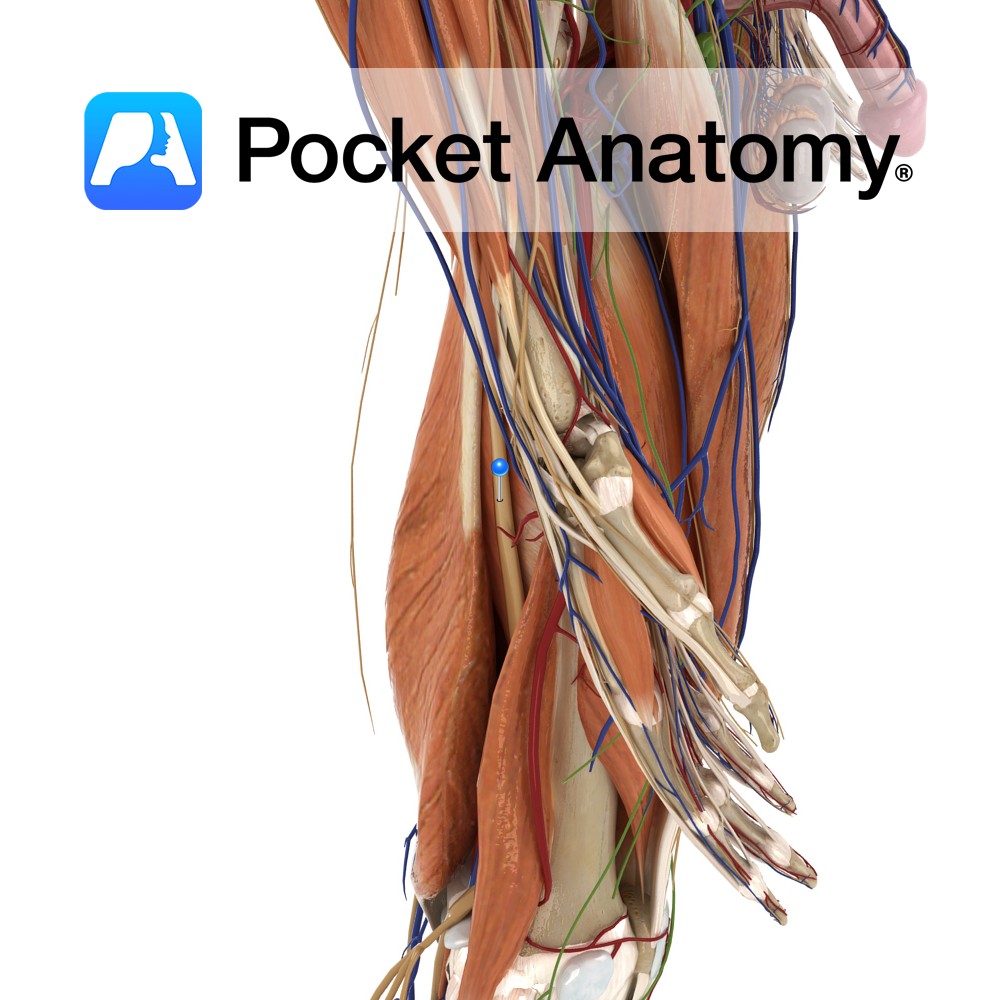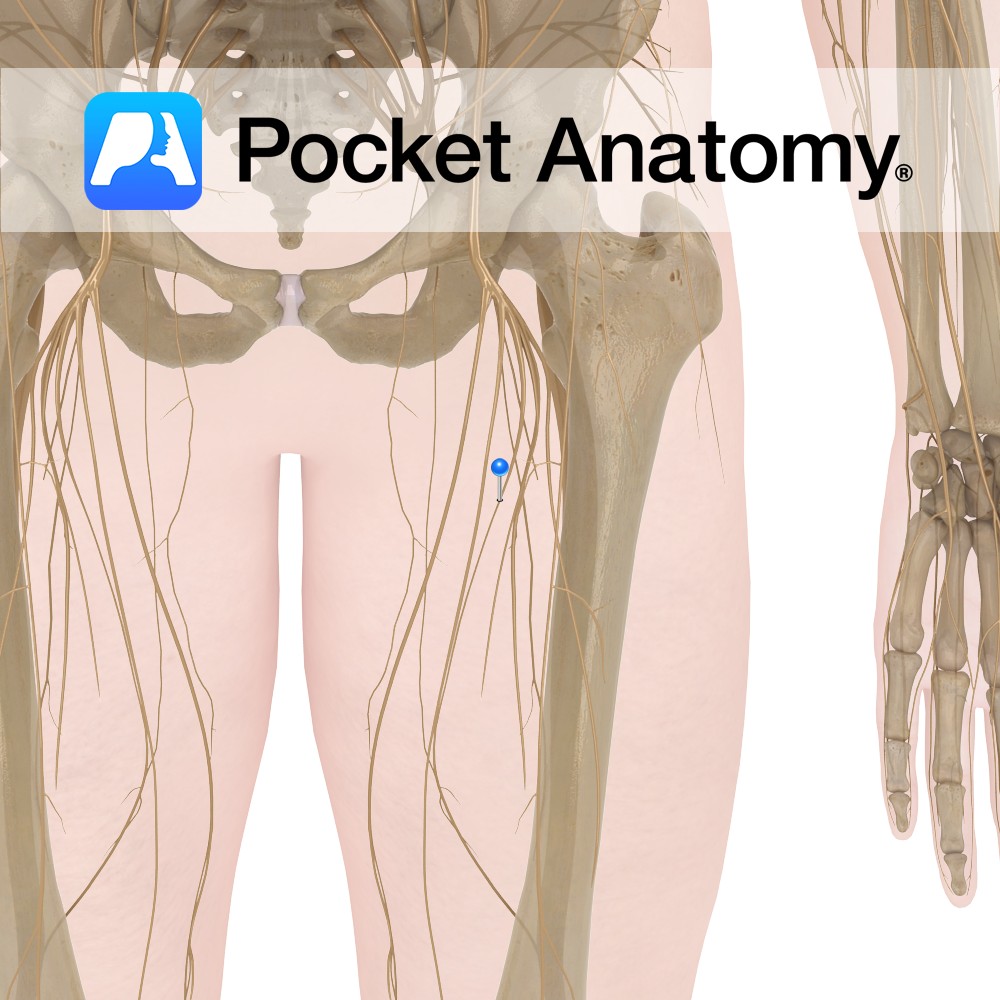Anatomy
Course
The largest nerve in the body, arising from the lumbar plexus. It is made up of fibres from the anterior rami of L4 – S3. It originates at the posterior pelvic wall, and exits the pelvic cavity by passing through the greater sciatic foramen inferior to the piriformis muscle.
It travels towards the thigh, beneath the gluteus maximus muscle, and travels distally between the adductor magnus and the superficial muscles in the posterior compartment of the thigh. It divides into two branches before the knee joint – the tibial and common fibular nerves.
Supply
Supplies motor innervation to the muscles in the posterior part of the thigh, some of adductor magnus, and all of the muscles in the leg and foot via its branches. It also provides some sensory innervation to the skin on the lateral leg and foot via its branches.
Clinical
Sciatica is pain caused in the gluteal region, posterior thigh or in the leg due to the general compression of, or damage to contributing fibres of the sciatic nerve. It can result in pain, weakness, numbness or tingling and the symptoms usually occur in one leg.
The compression may be due to a number of causes, such as a slipped disc, or piriformis syndrome.
Interested in taking our award-winning Pocket Anatomy app for a test drive?





-%5Btrue-rib%5D.jpg)